 We are coming into the big spending season, with Black Friday, Cyber Monday, the run-up to Christmas and then the winter sales. So will we all be rational maximisers and weigh up the utility we expect to receive from items against the price we pay (plus any other cost, such as time spent searching/shopping)? Or will we use a set of heuristics which make life easier and that we have found to be useful in helping us choose – heuristics such as buying things we’ve liked before, or going for things on special offer?
We are coming into the big spending season, with Black Friday, Cyber Monday, the run-up to Christmas and then the winter sales. So will we all be rational maximisers and weigh up the utility we expect to receive from items against the price we pay (plus any other cost, such as time spent searching/shopping)? Or will we use a set of heuristics which make life easier and that we have found to be useful in helping us choose – heuristics such as buying things we’ve liked before, or going for things on special offer?
The answer is that we do probably use a set of heuristics, at least for many items. And don’t the retailers and the marketing firms they employ know this!
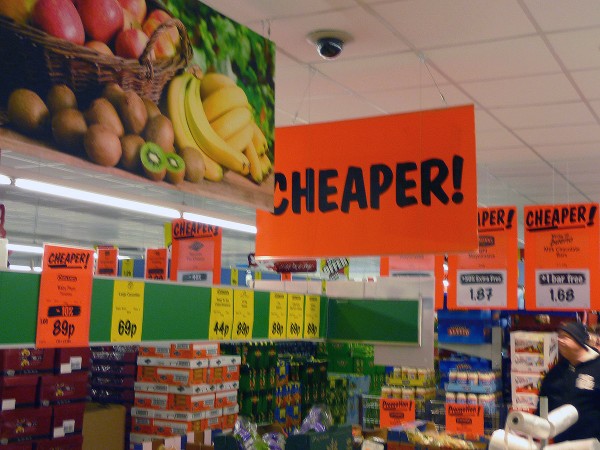
They will use all sorts of tricks of the trade to persuade us to part with our money. These tricks are designed to nudge us (or push us), without us feeling manipulated or conned – at least until we’ve bought their product.
And the tricks are getting more sophisticated. They include special offers which are not as good as they seem, time-limited offers which stimulate us to buy quickly without carefully thinking about what we’re doing, cunning positioning of products in shops to encourage us to buy things we had not planned to buy, adverts which play to our idealised perceptions or the ‘good life’ or what we would like to achieve, and packaging or display which make the product seem better than it is.
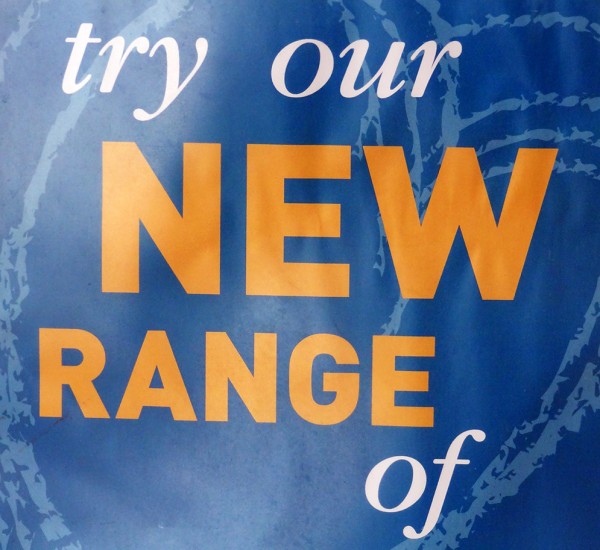
Also we are increasingly faced with targeted advertising where our smart devices capture information about our spending habits and tastes through our previous online spending or our search behaviour. This is then fed to advertisers to tailor adverts specifically to us on our mobiles, tablets, laptops and even, soon, on our smart TVs.
We may have a general desire to maximise utility from our spending, but market failures, such as consumers having imperfect information about products and a present bias (see also) in decision making, make us easy targets for the advertising and marketing industry. They understand the heuristics we use and try to take maximum advantage of them.
Happy shopping!
Articles
How shops use tricks to get you spending The Conversation, Cathrine Jansson-Boyd (16/11/17)
ColourPop looks to Qubit for next-gen personalization guidance Retail Dive, Dan O’Shea (13/6/17)
Channel 4 to offer 100% ad targeting across All 4 platform, seeking partners for linear equivalent The Drum, Jessica Goodfellow (14/11/17)
How Google aims to bring TV advertising into the 21st century The Drum, Ronan Shields (19/10/17)
How to Use Heuristics to Your Marketing Advantage MarketingProfs, Cam Secore (12/11/15)
Questions
- Does the use of heuristics contradict the assumption that consumers behave rationally?
- Give some examples of heuristics that you yourself use.
- Other than those identified above and in the first article, what ‘tricks’ might companies play on you to persuade you to buy their products?
- Is advertising personally targeted to individual consumers desirable for them?
- Give some examples of present bias in people’s behaviour.
- What factors should a retailer take into account when deciding whether to make pre-Christmas discounts?
- Explain what is meant by ‘affect heuristic’ and how the advertising industry uses the concept in setting the background to or scenario of an advertisement.
- Have you ever been persuaded into buying something you didn’t want? Why were you persuaded?
 The annual Sveriges Riksbank Prize in Economic Sciences in Memory of Alfred Nobel, normally known as the Nobel Prize in Economics, has been awarded 49 times since it was founded in 1969. Many well-known economists have been recipients of the award. This year it had been awarded to Richard Thaler for his research in behavioural economics. The award recognises his work in integrating economics with psychology.
The annual Sveriges Riksbank Prize in Economic Sciences in Memory of Alfred Nobel, normally known as the Nobel Prize in Economics, has been awarded 49 times since it was founded in 1969. Many well-known economists have been recipients of the award. This year it had been awarded to Richard Thaler for his research in behavioural economics. The award recognises his work in integrating economics with psychology.
Richard H. Thaler has incorporated psychologically realistic assumptions into analyses of economic decision-making. By exploring the consequences of limited rationality, social preferences, and lack of self-control, he has shown how these human traits systematically affect individual decisions as well as market outcomes.
In total, Richard Thaler’s contributions have built a bridge between the economic and psychological analyses of individual decision-making. His empirical findings and theoretical insights have been instrumental in creating the new and rapidly expanding field of behavioural economics, which has had a profound impact on many areas of economic research and policy.
Instead of making the assumption that people are rational maximisers, behavioural economists look at how people actually behave and respond to various incentives.
For example, people may be motivated by concepts of fairness and be prepared to make personal sacrifices for the sake of others. Such concepts of fairness tend to depend on the social context in which choices are made and can be influenced by the way choices are framed.
Also people may not weigh up costs and benefits but use simple rules of thumb, or heuristics, when making decisions. This might be an example of rational behaviour when time or information is limited, but the use of such heuristics often becomes engrained in behaviour and the rules become just habit.
People may also suffer from a lack of willpower or ‘present bias’. They may spend more than they can afford because they cannot resist the temptation to have a product. They may overeat because of the short-term pleasure it brings and ignore the long-term effects on their health.
 Understanding how people make choices and the temptations to which they succumb can help policymakers devise incentives to change behaviour to achieve various social goals.
Understanding how people make choices and the temptations to which they succumb can help policymakers devise incentives to change behaviour to achieve various social goals.
One type of incentive is nudging. A well-known example is people’s choice about whether to become an organ donor in the event of their death. If people are required to opt in to such a scheme, they may never get round to doing so. However, if they are required to opt out if they do not want to participate, many more people would thereby be donors and more organs would become available.
Another form of nudge is making desirable things fun. A well-known experiment here was encouraging people to use the stairs rather than the escalator when exiting a subway by making the stairs like a musical keyboard. See here for more examples.
The UK government set up a Behavioural Insights Team – also known as the Nudge Unit (now independent of government) to find ways of encouraging people to behave in their own or society’s best interests.
But it is not just governments which use the insights of behavioural economists such as Thaler. The advertising and marketing industry is always examining the most effective means of influencing behaviour. A classic example is the loss leader, where consumers are tempted into a shop with a special offer and then end up buying more expensive items there rather than elsewhere.
Firms and advertisers know only too well the gains from tempting people to buy items that give them short-term gratification – such as putting chocolate bars by the tills in supermarkets.
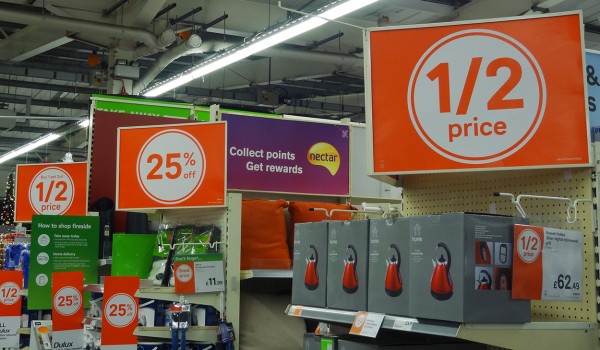 Understanding consumer psychology helps firms to manipulate people’s choices. And such manipulation may not be in our best interests. If we are being persuaded to buy this product or that, are we fully aware of what’s going on and how our tastes are being affected? Would we, by standing back and reflecting, make the same choices as we do on impulse or out of habit?
Understanding consumer psychology helps firms to manipulate people’s choices. And such manipulation may not be in our best interests. If we are being persuaded to buy this product or that, are we fully aware of what’s going on and how our tastes are being affected? Would we, by standing back and reflecting, make the same choices as we do on impulse or out of habit?
And governments too can seek to manipulate people in ways that some may find undesirable. Governments may try to influence us to follow their particular political agenda – as may newspapers. Certainly, during election or referendum campaigns, we are being nudged to vote a particular way.
It is important then for us to understand when we are being nudged or otherwise persuaded. Do we really want to behave in that way? Just as it is important, then, for governments and firms to understand individuals’ behaviour, so too it is important for individuals to understand their own behaviour.
Articles
Richard Thaler’s work demonstrates why economics is hard The Economist, RA (11/10/17)
Nobel in Economics Is Awarded to Richard Thaler The New York Times, Binyamin Appelbaum (9/10/17)
The Making of Richard Thaler’s Economics Nobel The New Yorker, John Cassidy (10/10/17)
Nobel prize in economics awarded to Richard Thaler The Guardian, Richard Partington (10/10/17)
Richard Thaler is a controversial Nobel prize winner – but a deserving one The Guardian, Robert Shiller (11/10/17)
What the mainstreaming of behavioural nudges reveals about neoliberal government The Conversation, Rupert Alcock (17/10/17)
This year’s economics Nobel winner invented a tool that’s both brilliant and undemocratic Vox, Henry Farrell (16/10/17)
How a critic of economics became the disciplines Nobel-winning best friend The Guardian, Tiago Mata and Jack Wright (25/10/17)
Podcast
 How Richard Thaler changed economics BBC, More of Less, Tim Harford (14/10/17)
How Richard Thaler changed economics BBC, More of Less, Tim Harford (14/10/17)
Questions
- For what reasons may individuals not always weigh up the costs and benefits of purchasing an item?
- Give some examples of the use of heuristics in making consumption decisions?
- Is the use of heuristics irrational?
- Explain how people considering that they have behaved fairly is influenced by the social context of their behaviour?
- Find out what is meant by the Dictator Game and how it can challenge the assumption that people behave selfishly. How is the ‘dictator’s’ behaviour affected by the possible payoffs?
- Thaler suggested that Brexit could be an example of behavioural economics in action. Find out what he meant by this. Do you agree?
- Give some examples of ways in which the government can nudge people to persuade them to behave in socially or individually desirable ways.
- Find out what is meant by the ‘endowment effect’ and how it influences people’s valuation of items they own.
- Why may nudging by governments be undemocratic?
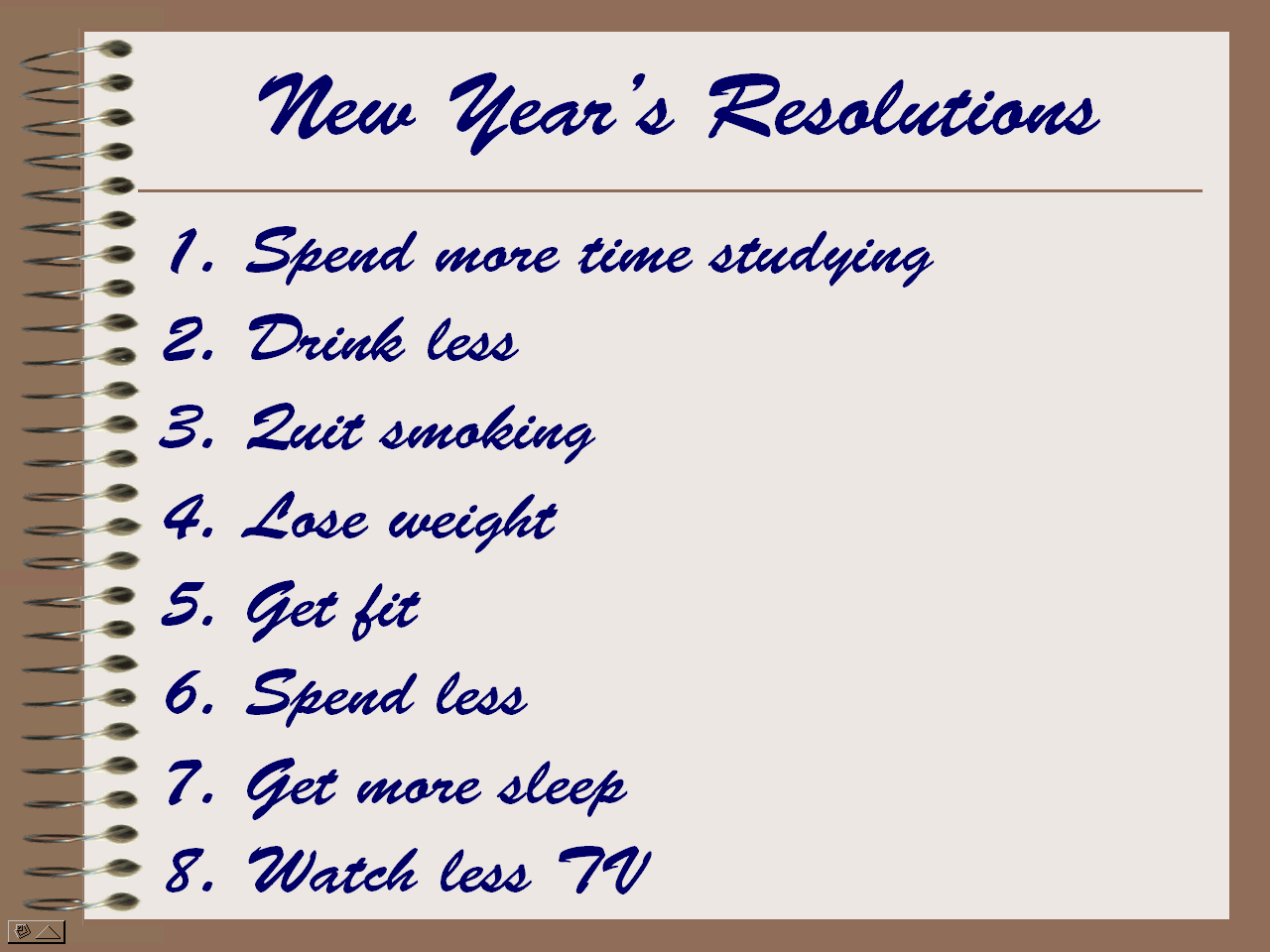 Many or us make New Year’s resolutions: going on a diet, doing exercise, spending more time studying. But few people stick to them, even though they say they would like to. So how can people be motivated to keep to their resolutions? Well, the experiments of behavioural economists provide a number of insights into the problem. They also suggest various incentives that can be used to motivate people to stick to their plans.
Many or us make New Year’s resolutions: going on a diet, doing exercise, spending more time studying. But few people stick to them, even though they say they would like to. So how can people be motivated to keep to their resolutions? Well, the experiments of behavioural economists provide a number of insights into the problem. They also suggest various incentives that can be used to motivate people to stick to their plans.
Central to the problem is that people have ‘time inconsistency’. They put a higher weight on the benefits of things that are good for them in the future and less weight on these benefits when they have to act now. You might strongly believe that going to the gym is good for you and plan to go next Monday. But when Monday comes, you can’t face it.
Another part of the time inconsistency problem is the relatively high weighting given to short-term gratification – eating chocolates, watching TV, spending time on social media, staying in bed.  When thinking about whether you would like to do these things in, say, a couple of days’ time, you put a low weight on the pleasures. But thinking about doing them right now, you put a much higher weight on them. As the well-known saying goes, ‘Hard work often pays off after time, but laziness pays off now’.
When thinking about whether you would like to do these things in, say, a couple of days’ time, you put a low weight on the pleasures. But thinking about doing them right now, you put a much higher weight on them. As the well-known saying goes, ‘Hard work often pays off after time, but laziness pays off now’.
So how can people be motivated to stick to their resolutions? Behavioural economists have studied various systems of incentives to see what works. Some of the findings are as follows:
|
|
| • |
People are generally loss averse. To get us to stick to New Year’s resolutions, we could devise a system of penalties for breaking them, such as paying 20p each time you swear! |
| • |
Given people’s time inconsistency, devising a system whereby you get treats after doing something you feel is good for you: e.g. watching TV for 30 minutes after you’ve done an hour’s revision. Rewards should follow effort, not precede them. |
| • |
Having simple clear goals. Thus rather than merely saying ‘I’ll eat less’, you devise a meal plan with menus that meet calorie and other dietary goals. Rather than saying, ‘I’ll exercise more’, you commit to going to the gym at specific times each week and doing a specific amount of each exercise. |
| • |
Ritualising. This is where you devise a regime that is feasible to stick to. For example, you could always write a shopping list to meet your dietary goals and then only buy what’s on that list; or you and your flatmates could have a rota for household chores. |
| • |
Social reinforcement. This is where people have a joint plan and help each other stick to it, such as going to the gym at specific times with a friend or group of friends, or joining a support group (e.g. to lose weight, or give up drinking or smoking). |
| • |
Avoiding temptation. For example, if you want to give up chocolate, don’t have any in the house. |
| • |
Using praise rather than criticism. People generally respond better to positive incentives than negative ones. |
Behavioural economists test these different incentive mechanisms to see what works best and then to see how they can be refined. The testing could be done experimentally, with volunteers being given different incentives and seeing how they respond. Alternatively, data could be collected on the effects of different incentive mechanisms that people have actually used, whether at home or at work.
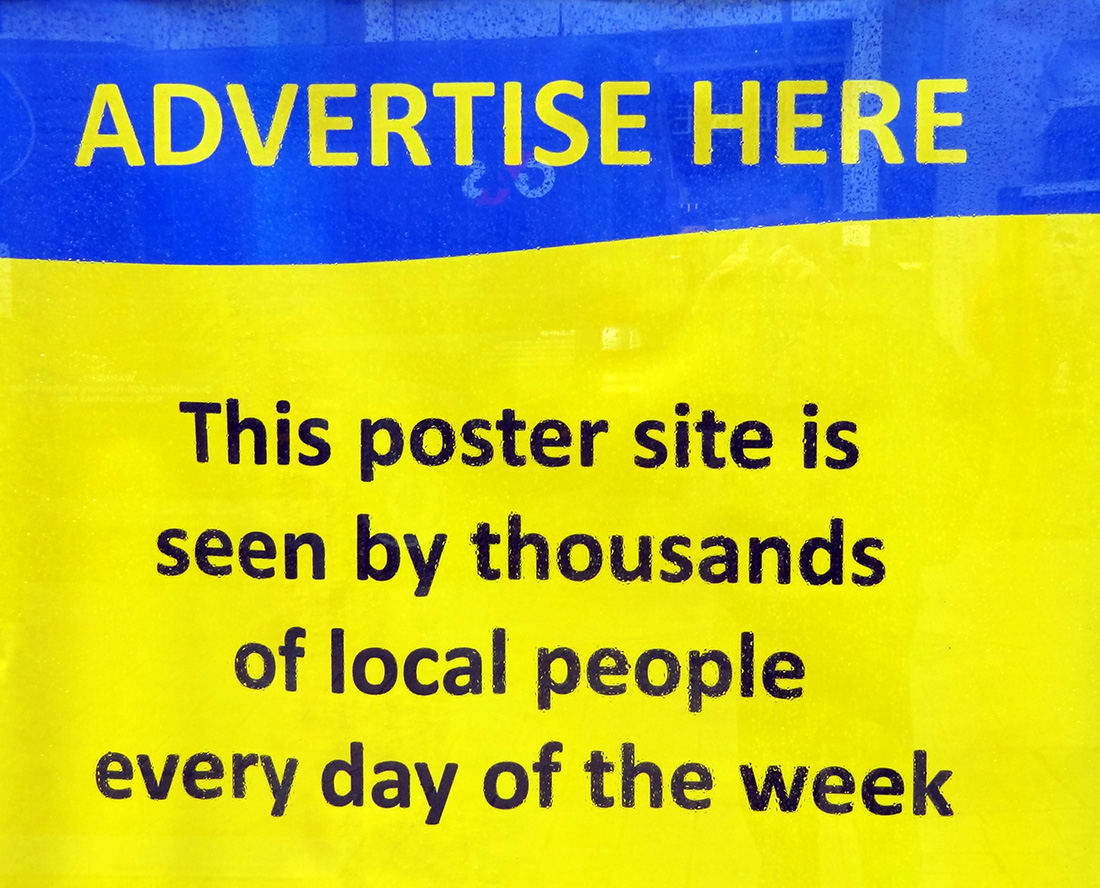 The advertising and marketing industry analyses consumer trends and how people respond to pricing, quality, display, packaging, advertising, etc. They want to understand human behaviour so that they can ‘direct’ it in their favour of their clients. Governments too are keen to find ways of encouraging people to do more of things that are good for them and less of things that are bad.
The advertising and marketing industry analyses consumer trends and how people respond to pricing, quality, display, packaging, advertising, etc. They want to understand human behaviour so that they can ‘direct’ it in their favour of their clients. Governments too are keen to find ways of encouraging people to do more of things that are good for them and less of things that are bad.
The UK government’s Behavioural Insights Team looks at ways people can be ‘nudged’ into changing their behaviour, see the blog A nudge in the right direction?
But back to New Year’s resolutions, have you made any? And, if so, have you thought about how you might stick to them? Have you thought about the incentives?
Podcast
 Dan Ariely talks “Payoff” WUNC 91.5: North Carolina Public Radio, Dan Ariely talks to Frank Stasio (3/1/17)
Dan Ariely talks “Payoff” WUNC 91.5: North Carolina Public Radio, Dan Ariely talks to Frank Stasio (3/1/17)
Articles and blogs
50 New Year’s Resolution Ideas and how to Achieve Each of Them Lifehack, Ivan Dimitrijevic (31/12/16)
5 New Year’s Resolutions You Can Keep (With The Help Of Behavioral Science Research) Forbes, Carmen Nobel (3/1/17)
The science behind keeping your New Year’s resolutions BT, SNAP PA (30/12/15)
The Guardian view on New Year resolutions: fitter, happier, more productive The Guardian, Editorial (3/1/17)
The Behavioral Economics of Your New Year’s Resolutions The Daily Beast, Uri Gneezy (5/1/14)
The psychology of New Year’s resolution The Conversation, Mark Griffiths (1/1/16)
Apply Behavioral Economics for a Better New Year Wharton Blog Network, William Hartje (16/1/14)
The Kardashians Can Help Your New Year’s Resolutions Huffington Post, John Beeby (29/12/16)
Using economics to score with New Year resolutions The Hindu, Venky Vembu (4/1/17)
Be It Resolved The New York Times, John Tierney (5/1/12)
Goal-setting site
stickK ‘Set your goals and achieve them!’
Questions
- Explain what is meant by time inconsistent behaviour. Is this the same as giving future costs and benefits a lower weighting than present ones (and hence having to discount future costs and benefits)?
- Give some examples of ways in which your own behaviour exhibits time inconsistency. Would it be accurate to describe this as ‘present bias’?
- Would you describe not sticking to New Year’s resolutions as ‘irrational behaviour’?
- Have you made any New Year’s resolutions, or do you have any plans to achieve goals? Could you alter your own personal incentives and, if so, how, to make it more likely that you will stick to your resolutions/goals?
- Give some examples of ways in which the government could ‘nudge’ us to behave in ways that were more in our own individual interests or those of society or the environment?
- Do you think it’s desirable that the advertising industry should employ psychologists and behavioural economists to help it achieve its goals?
 Can behavioural economics be applied to the case of Sweden? The Swedish government is trying this out by changing government policy in a way that may encourage its residents to change their behaviour.
Can behavioural economics be applied to the case of Sweden? The Swedish government is trying this out by changing government policy in a way that may encourage its residents to change their behaviour.
People in many countries in the world live in what is often called a ‘throwaway society’. If something breaks, it’s often easier and cheaper simply to get rid of it and buy a new one. But with changes in government policy, including VAT cuts on repairs to white goods, the objective is to encourage consumers to repair their goods, rather than buying new ones. This is also contributing towards the wider objective of sustainable consumption, which is being promoted by the Swedish government.
Per Bolund, who is one of Sweden’s six Green Ministers, spoke about this policy commenting that:
“Consumers are quite active in changing both what they buy and how they buy in Sweden … We believe that getting lower costs for labour is a big part in making it more rational to repair rather than just to buy cheap and throw away …If we don’t change the economic incentives the change will never come.”
Whether or not this policy works will take some time to see, but it’s certainly an interesting test of how changing incentives affect consumer behaviour. You can read about other examples of nudging in the following blog A nudge in the right direction?.
Articles
Waste not want not: Sweden to give tax breaks for repairs The Guardian, Richard Orange (19/9/16)
Can Sweden tackle the throwaway society? BBC News (20/9/16)
Trendy now, trash tomorrow Huffington Post, Kirsten Brodde (29/9/16)
Hong Kong needs a strategy quickly for dealing with waste South China Morning Post (27/9/16)
Questions
- If VAT on repairs falls, how will this affect consumer behaviour?
- Do you think there would be an income and a substitution effect from this change in government policy? What would they be?
- How is the Swedish government using incentives to change consumer behaviour?
- If it is cheaper to buy a new white good, then is it rational to buy a new one rather than repair an existing one?
- How effective do you think this policy would be in encouraging consumers to change their behaviour?
- Find some other examples of how people might be nudged to behave in ways that are in their own interest or that of society.
 Back in October, we looked at the growing pressure in the UK for a sugar tax. The issue of childhood obesity was considered by the Parliamentary Health Select Committee and a sugar tax, either on sugar generally, or specifically on soft drinks, was one of the proposals being considered to tackle the problem. The committee studied a report by Public Health England, which stated that:
Back in October, we looked at the growing pressure in the UK for a sugar tax. The issue of childhood obesity was considered by the Parliamentary Health Select Committee and a sugar tax, either on sugar generally, or specifically on soft drinks, was one of the proposals being considered to tackle the problem. The committee studied a report by Public Health England, which stated that:
Research studies and impact data from countries that have already taken action suggest that price increases, such as by taxation, can influence purchasing of sugar sweetened drinks and other high sugar products at least in the short-term with the effect being larger at higher levels of taxation.
In his Budget on 16 March, the Chancellor announced that a tax would be imposed on manufacturers of soft drinks from April 2018. This will be at a rate of 18p per litre on drinks containing between 5g and 8g of sugar per 100ml, such as Dr Pepper, Fanta and Sprite, and 24p per litre for drinks with more than 8g per 100ml, such as Coca-Cola, Pepsi and Red Bull.
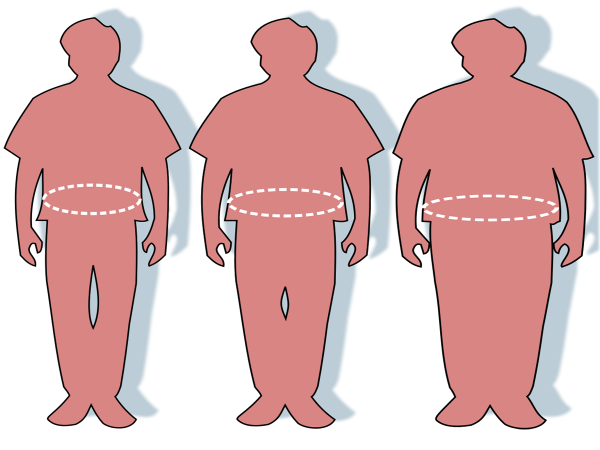 Whilst the tax has been welcomed by health campaigners, there are various questions about (a) how effective it is likely to be in reducing childhood obesity; (b) whether it will be enough or whether other measures will be needed; and (c) whether it is likely to raise the £520m in 2018/19, falling to £455m by 2020/21, as predicted by the Treasury: money the government will use for promoting school sport and breakfast clubs.
Whilst the tax has been welcomed by health campaigners, there are various questions about (a) how effective it is likely to be in reducing childhood obesity; (b) whether it will be enough or whether other measures will be needed; and (c) whether it is likely to raise the £520m in 2018/19, falling to £455m by 2020/21, as predicted by the Treasury: money the government will use for promoting school sport and breakfast clubs.
These questions are all linked. If demand for such drinks is relatively inelastic, the drinks manufacturers will find it easier to pass the tax on to consumers and the government will raise more revenue. However, it will be less effective in cutting sugar consumption and hence in tackling obesity. In other words, there is a trade off between raising revenue and cutting consumption.
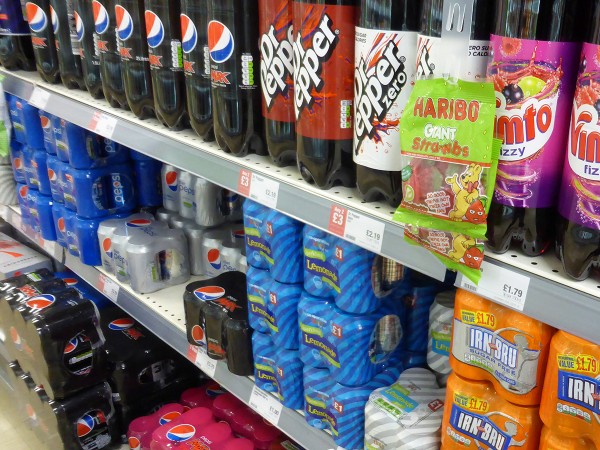 This incidence of tax is not easy to predict. Part of the reason is that much of the market is a bilateral oligopoly, with giant drinks manufacturers selling to giant supermarket chains. In such circumstances, the degree to which the tax can be passed on depends on the bargaining strength and skill of both sides. Will the supermarkets be able to put pressure on the manufacturers to absorb the tax themselves and not pass it on in the wholesale price? Or will the demand be such, especially for major brands such as Coca-Cola, that the supermarkets will be willing to accept a higher price from the manufacturers and then pass it on to the consumer?
This incidence of tax is not easy to predict. Part of the reason is that much of the market is a bilateral oligopoly, with giant drinks manufacturers selling to giant supermarket chains. In such circumstances, the degree to which the tax can be passed on depends on the bargaining strength and skill of both sides. Will the supermarkets be able to put pressure on the manufacturers to absorb the tax themselves and not pass it on in the wholesale price? Or will the demand be such, especially for major brands such as Coca-Cola, that the supermarkets will be willing to accept a higher price from the manufacturers and then pass it on to the consumer?
Then there is the question of the response of the manufacturers. How easy will it be for them to reformulate their drinks to reduce sugar content and yet still retain sales? For example, can they produce a product which tastes like a high sugar drink, 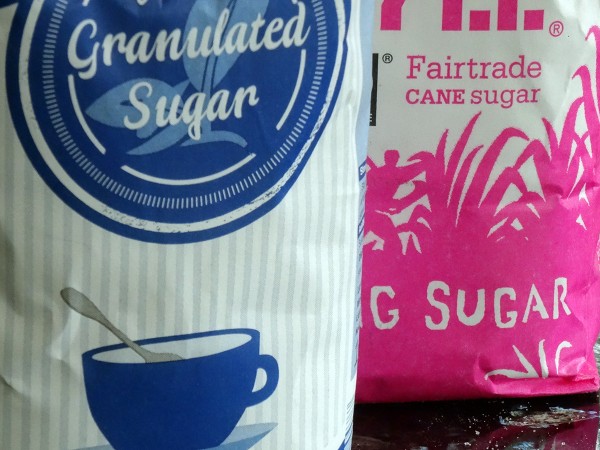 but really contains a mix between sugar and artificial sweeteners – effectively a hybrid between a ‘normal’ and a low-cal version? How likely are they to reduce the size of cans, say from 330ml to 300ml, to avoid raising prices?
but really contains a mix between sugar and artificial sweeteners – effectively a hybrid between a ‘normal’ and a low-cal version? How likely are they to reduce the size of cans, say from 330ml to 300ml, to avoid raising prices?
The success of the tax on soft drinks in cutting sugar consumption depends on whether it is backed up by other policies. The most obvious of these would be to impose a tax on sugar in other products, including cakes, biscuits, low-fat yoghurts, breakfast cereals and desserts, and also many savoury products, such as tinned soups, ready meals and sauces. But there are other policies too. The Public Health England report recommended a national programme to educate people on sugar in foods; reducing price promotions of sugary food and drink; removing confectionery or other sugary foods from end of aisles and till points in supermarkets; setting broader and deeper controls on advertising of high-sugar foods and drinks to children; and reducing the sugar content of the foods we buy through reformulation and portion size reduction.
Articles
- Sugar tax: How it will work?
BBC News, Nick Triggle (16/3/16)
- Will a sugar tax actually work?
The Guardian, Alberto Nardelli and George Arnett (16/3/16)
- Coca-Cola and other soft drinks firms hit back at sugar tax plan
The Guardian, Sarah Butler (17/3/16)
- Sugar tax could increase calories people consume, economic experts warn
The Telegraph, Kate McCann, and Steven Swinford (17/3/16)
- Nudge, nudge! How the sugar tax will help British diets
Financial Times, Anita Charlesworth (18/3/16)
- Is the sugar tax an example of the nanny state going too far?
Financial Times (19/3/16)
- Government’s £520m sugar tax target ‘highly dubious’, analysts warn
The Telegraph, Ben Martin (17/3/16)
- Sorry Jamie Oliver, I’d be surprised if sugar tax helped cut obesity
The Conversation, Isabelle Szmigin (17/3/16)
- Sugar sweetened beverage taxes
What Works for Health (17/12/15)
Questions
- What determines the price elasticity of demand for sugary drinks in general (as opposed to one particular brand)?
- How are drinks manufacturers likely to respond to the sugar tax?
- How are price elasticity of demand and supply relevant in determining the incidence of the sugar tax between manufacturers and consumers? How is the degree of competition in the market relevant here?
- What is meant by a socially optimal allocation of resources?
- If the current consumption of sugary drinks is not socially optimal, what categories of market failure are responsible for this?
- Will a sugar tax fully tackle these market failures? Explain.
- Is a sugar tax progressive, regressive or proportional? Explain.
- Assess the argument that the tax on sugar in soft drinks may actually increase the amount that people consume.
- The sugar tax can be described as a ‘hypothecated tax’. What does this mean and is it a good idea?
- Compare the advantages and disadvantages of a tax on sugar in soft drinks with (a) banning soft drinks with more than a certain amount of sugar per 100ml; (b) a tax on sugar; (c) a tax on sugar in all foods and drinks.
 We are coming into the big spending season, with Black Friday, Cyber Monday, the run-up to Christmas and then the winter sales. So will we all be rational maximisers and weigh up the utility we expect to receive from items against the price we pay (plus any other cost, such as time spent searching/shopping)? Or will we use a set of heuristics which make life easier and that we have found to be useful in helping us choose – heuristics such as buying things we’ve liked before, or going for things on special offer?
We are coming into the big spending season, with Black Friday, Cyber Monday, the run-up to Christmas and then the winter sales. So will we all be rational maximisers and weigh up the utility we expect to receive from items against the price we pay (plus any other cost, such as time spent searching/shopping)? Or will we use a set of heuristics which make life easier and that we have found to be useful in helping us choose – heuristics such as buying things we’ve liked before, or going for things on special offer?












